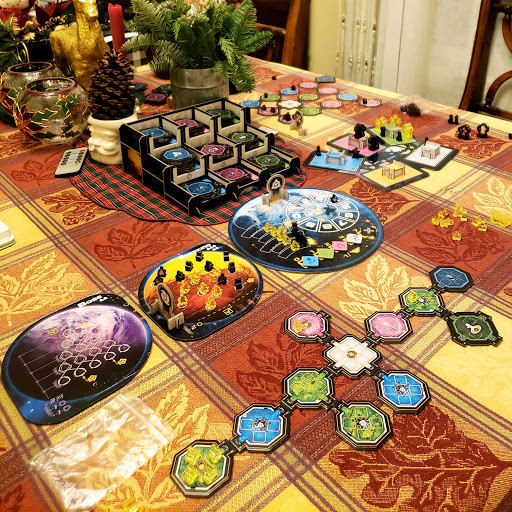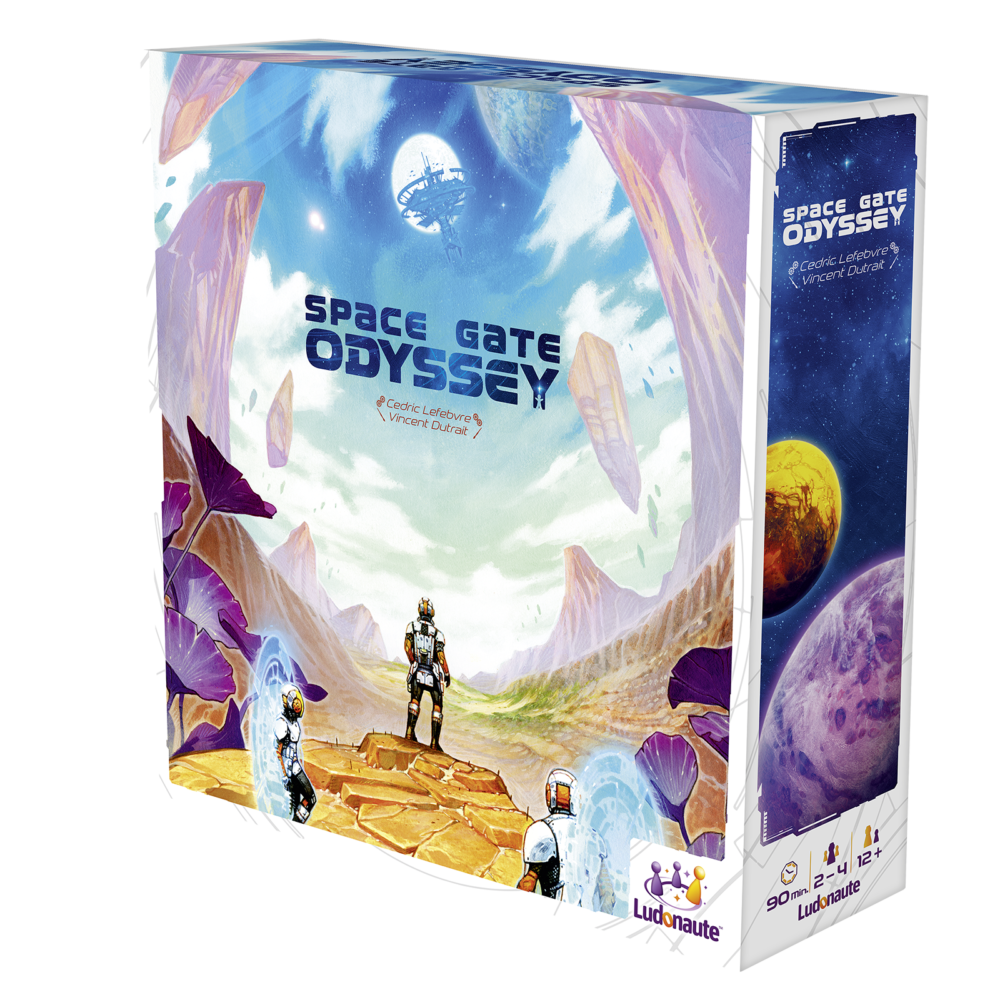Over the New Year’s weekend, Joy and I finally got a chance to break out Space Gate Odyssey, a 2-4 player game from Ludonaute Games, thereby removing the longest-standing unplayed game from my shelf. The premise of the game is that you are competing factions trying to gain predominance on specific colony worlds by building space stations and transferring colonists via space gates. The gameplay is fairly straightforward – each turn, a player selects one of five action spaces. For each worker (robot) in the space, the player gets an action point – two if an engineer meeple has been upgraded with a chief engineer suit. Any other players with workers on the space also get action points for the workers they have there. Three of the action spaces generate movement points to allow you to move your colonists through the station towards your space gates. The difference between them is that each space has a different module color that your colonists must land on at the end of their movement. The fourth space allows you to bring new colonists onto your station via airlocks, and the fifth allows you to add new modules to your station. The new modules stay inactive until a colonist moves onto them, at which point the module activates but the colonist is lost (presumably becoming a space station worker).

There are three module types in three colors. The first is the aforementioned airlock module; the second is a space gate, which transfers the colonists on it to a specific planet once all the module spaces are full. The third doesn’t help you colonize directly, but instead, when activated, allows you to add an engineer, promote an existing engineer to a chief engineer (adding a suit) or add a robot. Robots are dedicated workers who live permanently on a specific action space. Each module add-on is therefore a tradeoff – do I get more actions at the expense of longer paths from airlock to space gate, or keep the paths short but have fewer action options? Fundamentally, the space station part of the game is an engine-building and -optimizing exercise, and the right thing to do is not at all obvious on the first play. I thought Joy’s station was very badly optimized, but she thoroughly trounced me, proving it was far more efficient at putting colonists on the ground.
Once through the space gates, the colonists are placed in spaces on the colony planet. Each planet has different rules for placement. Some might allow you to place colonists anywhere, and give a flat point score for each one; others might require a specific pattern and provide more benefits for specific placement areas. Placing colonists in certain spaces also allows you to rearrange the end game bonus tiles, which provide benefits for, as an example, having the most active green modules in your station. Once a planet is filled (based on the criteria and rules for that planet), the space gate moves on, either to one of two additional worlds or, if both are in use, back to the home base of Hawking. The space gate is still useful at home base, however – colonists sent to Hawking are worth a point each.
Space Gate Odyssey is one of those games that is harder to explain than it is to just play. Once we got into the game, the flow of play became obvious. What wasn’t obvious at all was the right strategic approach, and I think we would benefit from replays to figure out the right station-building schemes. Replay is also enhanced by the variety of planets and their different rules; one we used, for example, was a race planet, where the first one to fill half the spots closed off the world.
The components for Space Gate Odyssey are quite good, although mostly punchboard. I particularly like the “module shelf”, which stores the modules pre-sorted, making setup really easy. Joy and I enjoyed the game very much once we got the hang of it, and I’m looking forward to trying it four-player post-pandemic.


Leave a Reply